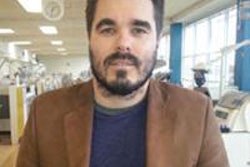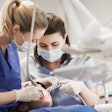
Consider this: You are evaluating a patient who presents with orofacial injuries that seem suspicious, making you wonder if your patient has been the victim of abuse.
What do you do next?
Your patient may or may not choose to reveal if the injuries are the result of abuse, but now a team of researchers has laid out a useful framework that can guide you in your interactions with potentially traumatized patients (Journal of the American Dental Association, March 2014, Vol. 145:3, pp. 238-245).
Studies have shown that traumatic events are highly prevalent among U.S. citizens, and this high prevalence suggests that dentists are likely to encounter survivors of violence in their practice, the authors of the JADA article noted.
"Victims of domestic violence may be likely to seek emergency dental care because orofacial injuries are a common result of battery," they wrote. "In addition, head and neck injuries occur in more than one-half of child abuse cases, and the oral cavity is a frequent site of sexual abuse in children."
Co-author Sheela Raja, PhD, an assistant professor at the University of Illinois at Chicago Department of Pediatric Dentistry, told DrBicuspid.com that she decided to do research on this subject because of her experience training students about mandated reports such as child abuse and elder abuse.
Anytime you see an orofacial injury and the patient's explanation does not match up to the extent of the injury, you should be on the alert, she warned.
Raja, who is a behavioral scientist and has a background in counseling for post-traumatic stress disorder, said that when you see patients who may have a traumatizing past, it is important to know how to approach them.
"You can either engage them or lose their trust with your behavior," she said.
Traumatic events such as childhood sexual abuse, domestic violence, elder abuse, and combat history may influence how patients experience oral care, and may interfere with their engagement in preventive care, the authors noted.
Trauma victims may suffer from anxiety and have trouble trusting others, develop negative coping methods such as smoking and drinking, and exhibit psychological reactions such as the triggering of traumatic memories on being touched by a healthcare provider. Dental visits in particular can be challenging, and use of objects such as mouth props and saliva ejectors, as well as oral cancer screenings, can cause patients anxiety.
"One reason dentists don't say anything even when they suspect abuse is that they don't want to offend the patient, or say or do something wrong to alienate them," Raja explained. "Another reason is that they are not sure what they are supposed to report and where."
Raja and colleagues have proposed a trauma-informed care pyramid that provides specific guidance for dentists according to setting, specialty, and individual patient needs.
"There has been some great work done in this area in medicine and to a lesser extent in dentistry," Raja said. "We took all the pieces of literature and put them together in a cohesive way for providers to use."
She added that although there is a lot of theory on trauma, during her time training students they would ask questions, such as "Should we screen everyone for trauma?" or "What do I do in this room with them?" She and her colleagues wanted to offer some practical suggestions that dentists can apply in everyday practice.
The trauma-informed care pyramid
The first level of the trauma-informed care pyramid is communication skills, and certain communication and behavioral techniques can be helpful in these situations. Giving patients a feeling of control by providing an overview of the dental procedure, use of the "tell-show-do" technique, and even something as simple as asking them what would make them more comfortable can help alleviate anxiety.
"The most important thing to remember is that all those communication and behavioral skills you use with patients in general to make them comfortable become even more important with trauma victims," Raja said.
The next level of the pyramid is understanding the health effect of trauma. For example, when dealing with negative coping mechanisms, it is important to remember that these behaviors may be related to stressful events in the patient's life, the authors wrote. Approaching the patient in a nonblaming manner will increase the chances of engaging the patient.
They also recommend collaboration with other professionals, such as physicians and oral surgeons who have the skills needed to care for traumatized patients.
"Having these interprofessional relationships is a great way to retain patients in your practice," Raja said.
Also, dentists should maintain a list of referral sources, such as therapists or hotline information, and have a thorough understanding of mandated reporting requirements in their state.
Dental care providers should also have a clear understanding of their own history of trauma, because if they have a history of abuse they may feel uncomfortable discussing certain issues with patients for fear of retriggering their own feelings, the authors noted.
Finally, the top level of the pyramid discusses the issue of trauma screening itself and when it should be used in oral health practice.
"Most dental care settings do not offer providers the time and resources to conduct or discuss the results of screening," the authors wrote. "Patients may also find this type of questioning is intrusive when coming from their dental care provider."
The authors, therefore, do not recommend that all dental care providers routinely screen for trauma. Exceptions to this guideline are providers who work with high-risk populations, or those who see pediatric or adult patients with acute orofacial injuries or other visible bruising, broken bones, or lacerations that suggest abuse.
"Dental care providers have a unique niche within the health professions. Ideally patients develop a sense of trust and rapport with their dentists over a lifetime," the authors concluded. "Given the high prevalence of trauma in our society, learning to engage trauma survivors in dental care may improve patients' lives and could affect oral care on a national level."



















